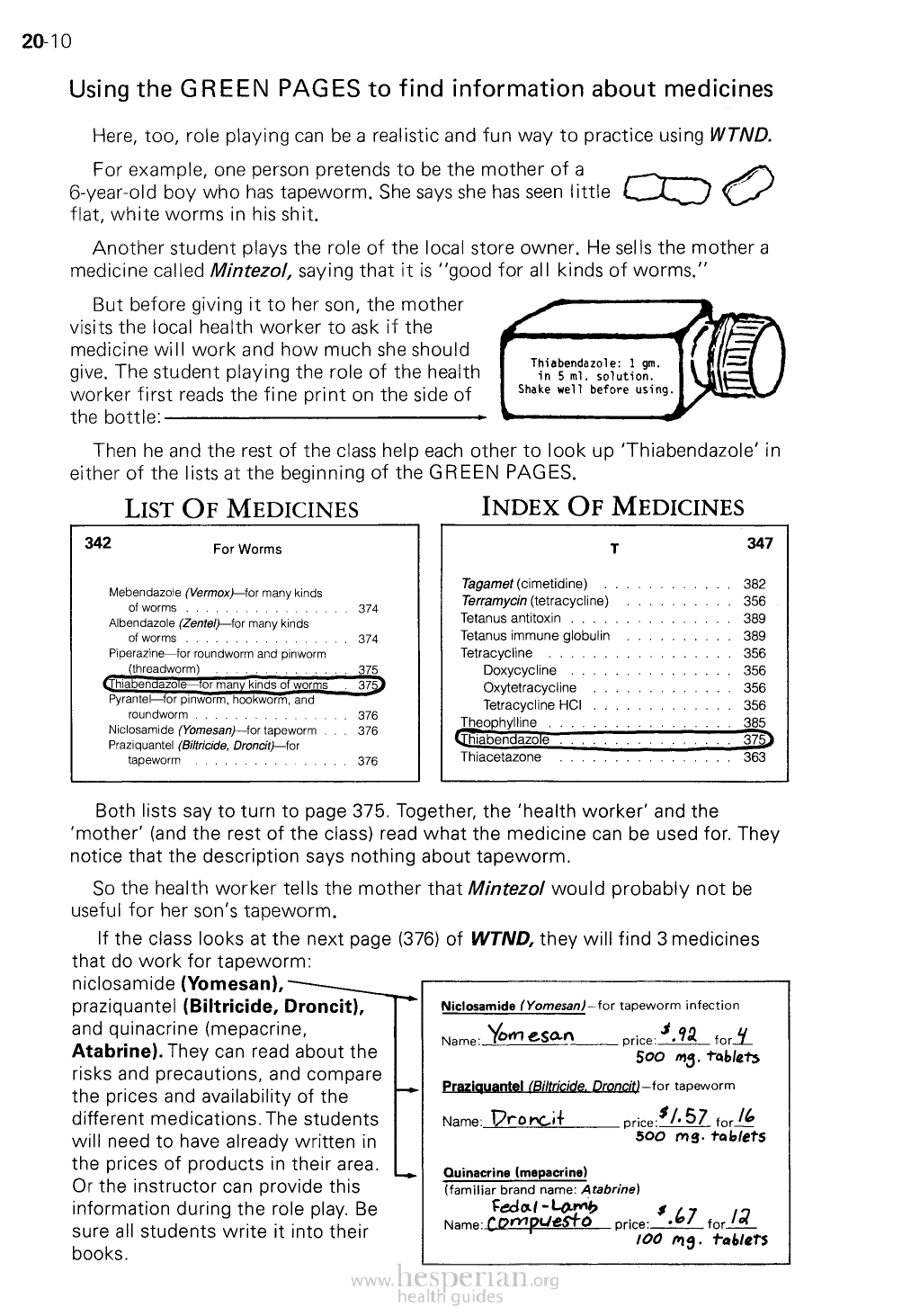
20-10
Using the GREEN PAGES to find information about medicines
Here, too, role playing can be a realistic and fun way to practice using WTND.
For example, one person pretends to be the mother of a
6-year-old boy who has tapeworm. She says she has seen
little flat, white worms in his shit.
Another student plays the role of the local store owner. He sells the mother a
medicine called Mintezol, saying that it is “good for all kinds of worms.”
But before giving it to her son, the mother
visits the local health worker to ask if the
medicine wilt work and how much she should
give. The student playing the role of the
health worker first reads the fine print on the
side of the bottle:
Then he and the rest of the class help each other to look up ‘Thiabendazole’ in
either of the lists at the beginning of the GREEN PAGES.
LIST OF MEDICINES
INDEX OF MEDICINES
Both lists say to turn to page 375. Together, the ‘health worker’ and the ‘mother’
(and the rest of the class) read what the medicine can be used for. They notice that
the description says nothing about tapeworm.
So the health worker tells the mother that Mintezol would probably not be useful
for her son’s tapeworm.
If the class looks at the next page (376) of WTND, they will find 3 medicines
that do work for tapeworm:
niclosamide (Yomesan),
praziquantel (Biltricide, Droncit),
and quinacrine (mepacrine.
Atabrine). They can read about the
risks and precautions, and compare
the prices and availability of the
different medications. The students
will need to have already written in
the prices of products in their area.
Or the instructor can provide this
information during the role play. Be
sure all students write it into their
books.